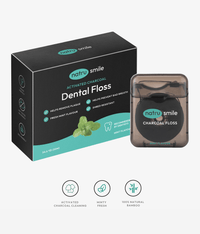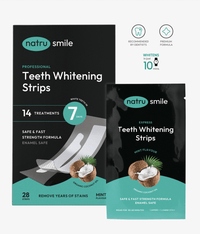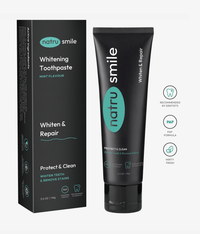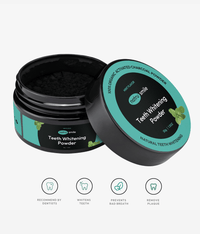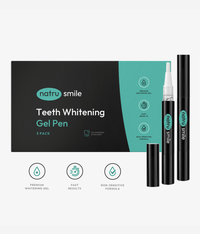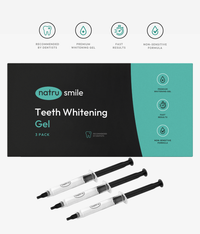
All products are certified by dental expert Dr. Greg Grillo
When it comes to making a decision between dental restorations, the debate surrounding onlays vs. crowns often emerges as a prominent topic. Both of these options have their own set of advantages and potential drawbacks, making the decision-making process quite challenging.
In this comprehensive and thorough article, we will guide you through the differences between dental onlays and crowns, discuss the pros and cons of each dental restoration, and assist you in determining which option best suits your individual needs.
Understanding Onlays And Crowns: A Detailed Overview
A dental crown serves as a tooth-shaped cap precisely designed to cover the entire visible portion of a tooth that lies above the gum line. Its primary purpose is to effectively seal and protect the tooth from further damage, decay, or deterioration. Dental crowns can be crafted from a variety of materials, including metals, porcelain, or composite resin.
The shade and appearance of the crown color are meticulously chosen to seamlessly match the surrounding teeth, ensuring that the dental restoration maintains a highly natural and nearly undetectable appearance.
On the other hand, a dental onlay (often referred to as a partial crown) represents a distinct type of dental restoration specifically designed to cover only a portion of the tooth's surface. Similar to dental crowns, onlays are employed to repair a damaged or compromised tooth.
However, one key difference is that they do not require as much tooth reduction and removal as a dental crown, thus preserving more of the natural tooth. Onlays are typically fashioned from porcelain or composite resin but can also be made from gold, resulting in a gold tooth crown.
What Do Crowns And Onlays Look Like? An In-Depth Comparison
Dental crowns and onlays are common restorative dental treatments that help improve the function and appearance of damaged or decaying teeth. Here, we'll compare their characteristics and appearance to gain a better understanding of their differences.
Dental Crowns
Dental crowns, sometimes referred to as "caps," are designed to cover the entire tooth, carefully crafted to mimic its natural shape, color, and function. They offer protection and strength to teeth that have experienced significant decay, fractures, or other forms of damage. Dental crowns are typically made from materials such as porcelain or ceramic, and sometimes a combination of metal alloys and porcelain for added strength.
When creating a dental crown, your dentist will meticulously match the shade and appearance of the surrounding teeth, ensuring that the crown is virtually indistinguishable from your natural teeth. This results in a seamless integration of the crown into your existing smile, maintaining its beauty and overall aesthetic appeal.
Onlays
Onlays, sometimes referred to as "partial crowns," are a more conservative dental restoration option as they only cover the damaged or decayed portion of the tooth. Like dental crowns, onlays mimic the natural tooth's color, appearance, and function, but they focus on repairing a specific area rather than encapsulating the entire tooth.
This method of dental restoration is typically recommended when the tooth's structure is not damaged enough to necessitate a full dental crown. Onlays are designed to blend seamlessly with the rest of your teeth, preserving more of the tooth's natural structure and minimizing the need for extensive tooth preparation.
Both dental crowns and onlays are carefully designed to resemble your natural teeth in terms of appearance, shape, and color. Crowns offer a more comprehensive restoration by covering the entire tooth, while onlays provide a more conservative and targeted approach, addressing only the damaged section of the tooth. In both cases, the goal is to restore the function and appearance of your teeth, enhancing the overall health of your mouth and maintaining the aesthetic appeal of your smile.
Dental Crown Vs. Onlay: Pros And Cons
Before diving into a detailed comparison, let's take a closer look at the advantages and disadvantages of dental crowns and onlays. This will help you understand which of the two restorative procedures might be better suited to your needs.
Dental Crown Advantages
-
Full coverage: Dental crowns offer complete coverage and protection for a damaged tooth, making them effective at safeguarding the tooth from further harm.
-
Aesthetic restoration: Crowns can restore the tooth's shape and appearance, helping to maintain or improve the overall look of your smile.
-
Durability and longevity: Dental crowns are strong and can last for many years, especially when opting for a high-quality Zirconia Crown.
- Ideal for severe damage: Crowns are well-suited for restoring teeth that have undergone significant damage.
Dental Crown Disadvantages
-
Extensive tooth reduction: Dental crowns require a greater amount of tooth reduction than onlays, possibly leading to the need for more extensive dental procedures.
-
Higher cost: The overall dental crown cost can be higher compared to onlays, making them a more expensive option.
- Less conservative treatment: Crowns can be less conservative than onlays, and in some cases, may result in tooth crown pain following the procedure.
Dental Onlay Advantages
-
Tooth preservation: Onlays preserve more of the natural tooth structure than crowns, making them a more conservative option.
-
Less invasive procedure: Onlays are less invasive and require less tooth reduction than crowns.
- Cost-effective: Generally, dental onlays tend to be less expensive than crowns.
- Comparable durability: With proper care, onlays can be just as durable and long-lasting as dental crowns.
Dental Onlay Disadvantages
-
Limited suitability: Onlays may not be the best option for teeth with severe damage, as they don't offer the same level of coverage as crowns.
- Aesthetic limitations: In some cases, onlays may not be as aesthetically pleasing as crowns, potentially impacting the overall appearance of your smile.
Dental Crowns Vs. Dental Onlays: A Comprehensive Comparison
Now that we've covered the basics of black dots on teeth, let's move on to related dental restorations and compare dental crowns and onlays in greater detail.
Cost
In general, dental onlays tend to be less expensive than crowns. The exact dental crown cost can vary based on factors like the dentist's fees, geographic location, and the materials used in the creation of the restoration. Prices can range anywhere from $500 to $3,000 for dental crowns and $600 to $1,200 for dental onlays. It's essential to discuss the costs with your dentist and determine which option best meets your unique needs and budgetary constraints.
Comfortability And Sensitivity
Both dental crowns and onlays are specifically designed to provide an optimal fit, function, and level of comfort. However, since onlays require less tooth reduction than dental crowns, patients may experience less sensitivity and tooth crown pain after the procedure compared to crowns. This is an important consideration when deciding between the two types of restorations, as patient comfort should always be a priority.
Duration Of Treatment
The duration of treatment for dental crowns and onlays is comparable, as both may take roughly two to three dental appointments to complete. During the first visit, a mold or digital scan is taken of the affected tooth, and the final restoration is placed on the tooth during the subsequent appointment. In both cases, patients can expect to wear temporary crowns or onlays while they wait for their custom-made permanent restorations to be fabricated by a dental laboratory.
Procedure
The key difference between dental crowns and onlays lies in the procedure itself. For dental crowns, more tooth structure is removed to create the ideal shape to accommodate the crown. After the tooth is prepared, an impression or digital scan is made, and a temporary crown is placed over the tooth to protect it while the permanent crown is being crafted by a dental lab. Once the custom-made crown is ready, the dentist will remove the temporary crown and cement the permanent one in its place.
For dental onlays, the procedure is similar, but less tooth structure is removed, preserving more of the natural tooth. After the tooth preparation, an impression or digital scan is made, and a temporary onlay is placed over the damaged area. The final onlay is then cemented into place at the subsequent appointment, effectively restoring the tooth's function and appearance.
In summary, both dental crowns and onlays have their unique advantages and potential drawbacks. It's crucial to consult with your dentist to determine which restoration option is most appropriate for your specific dental needs.
Materials Used
In the world of dentistry, dental crowns and onlays can be manufactured from a range of different materials, each with its own unique set of advantages. The most commonly used materials for these dental restorations include porcelain, composite resin, and gold.
-
Porcelain: Known for its natural appearance and ability to closely mimic the color and texture of real teeth, porcelain is a popular choice for both crowns and onlays. Additionally, it is highly durable and stain-resistant, making it ideal for long-lasting dental restorations.
-
Composite Resin: Another material that resembles natural teeth, the composite resin is a combination of plastic and glass particles, providing strength and durability. While not as long-lasting as porcelain, it is a more affordable option that still maintains a natural-looking appearance.
- Gold: Gold dental crowns, such as a gold tooth crown, continue to be a popular choice for their durability and longevity. Although their appearance doesn't match that of natural teeth, gold dental restorations offer excellent resistance to wear and tear, making them highly suited for situations where durability is of utmost importance.
Dental Insurance Coverage For Crowns And Onlays
When it comes to dental insurance, coverage for crowns and onlays is typically included, but the exact amount that your particular plan will cover depends on the specific provisions of your policy. To get an accurate estimate of the costs you can expect to be covered for your needed dental treatment, it's important to consult with your insurance provider and thoroughly review your policy.
Effectiveness Of Dental Crowns And Onlays
Dental crowns and onlays are both highly effective solutions for treating damaged teeth, each offering different advantages depending on the severity and specific needs of the tooth in question.
-
Dental Crowns: Better suited for teeth that have experienced substantial damage, dental crowns envelop the entire visible portion of a tooth, providing robust structural support and restoring the tooth's function. In cases where the tooth is more extensively damaged, a crown is the optimal choice.
- Onlays: For teeth with moderate damage, an onlay can be a more conservative solution. Onlays cover the chewing surface and one or more cusps of a tooth, reinforcing the existing structure without the need for a full dental crown.
Ultimately, the choice between a dental crown and an onlay depends on the extent of tooth damage, the location of the tooth in question, and personal preferences in terms of cost and aesthetics. By speaking to your dentist, you can ascertain which option is most appropriate for your specific situation.
Should You Choose Onlays Or Crowns?
Deciding between an onlay and a crown can be a daunting task, but the choice ultimately depends on various factors such as the degree of damage to the tooth, your dentist's recommendations, and your individual preferences.
Onlays: The Less Invasive Option For Minimal To Moderate Damage
Onlays are typically the more conservative and less invasive option for teeth with minimal to moderate damage. They are custom-made to fit only the affected portions of the tooth, thereby preserving a greater amount of healthy tooth structure. This partial coverage is the main reason onlays are sometimes referred to as "indirect fillings" or "partial crowns."
Crowns: Full Protection For Severely Damaged Teeth
For teeth that have extensive decay or structural damage, crowns might be the most suitable choice. Dental crowns are designed to entirely cover the exposed part of the tooth, providing full protection and enhanced structural support. This makes crowns more effective at preventing additional decay or fracture, which is especially important for teeth that have been significantly weakened.
Is An Onlay Considered A Crown?
Although onlays and dental crowns are both forms of dental restorations, they are distinct in their design and purpose. An onlay is considered a partial crown, given that it only covers a portion of the tooth rather than the entire exposed area. When compared to crowns, onlays may be a more conservative and less invasive option for dental restoration, depending on the level of damage.
Should I Get An Onlay Or Crown After The Root Canal?
Your choice between an onlay and a dental crown following a root canal treatment depends largely on the dentist's evaluation of the tooth's condition and their professional recommendation. In some instances, an onlay may be sufficient in restoring the tooth after the root canal procedure. However, if the tooth is substantially damaged or structurally compromised, a dental crown may be required to provide the necessary support and long-term protection.
When Should I See A Doctor?
It's crucial to consult a dentist promptly if you experience dental pain and sensitivity, or if you observe visible signs of damage to a tooth. Postponing treatment can lead to further deterioration or complications, which may necessitate more extensive interventions in the long run. By seeking timely professional advice, you can help maintain your dental health and potentially avoid severe consequences such as tooth loss or the need for more invasive procedures.
The Bottom Line
In conclusion, it's essential to understand that dental crowns and onlays are two effective treatment options when it comes to restoring and protecting damaged teeth. Both options offer unique benefits, and each may be more suitable in different situations depending on the condition of the tooth in question and the patient's specific needs.
Onlays are often considered a more conservative option because they preserve more of the natural tooth structure. This approach is especially useful when the damage to the tooth is moderate or limited to specific areas, such as a fractured cusp or a large cavity. Onlays are custom-made to fit the affected tooth precisely, and they are bonded in place to provide strength and stability without removing as much of the tooth's natural structure as a crown would.
On the other hand, dental crowns offer a comprehensive solution for teeth that have been badly damaged by decay, fracture, or extensive wear. A crown encases the entire visible portion of the tooth, providing comprehensive protection and support for the remaining tooth structure beneath. In cases where a tooth is severely compromised, a crown may be the better option to ensure long-term functionality and stability.
Ultimately, deciding between an onlay and a crown should be a joint effort between you and your dentist. By discussing your specific situation, needs, and preferences, your dentist can provide personalized recommendations and expert guidance in choosing the most appropriate treatment option. This collaboration helps to ensure that you receive the optimal solution for your unique dental concerns, leading to improved oral health and better long-term outcomes.


